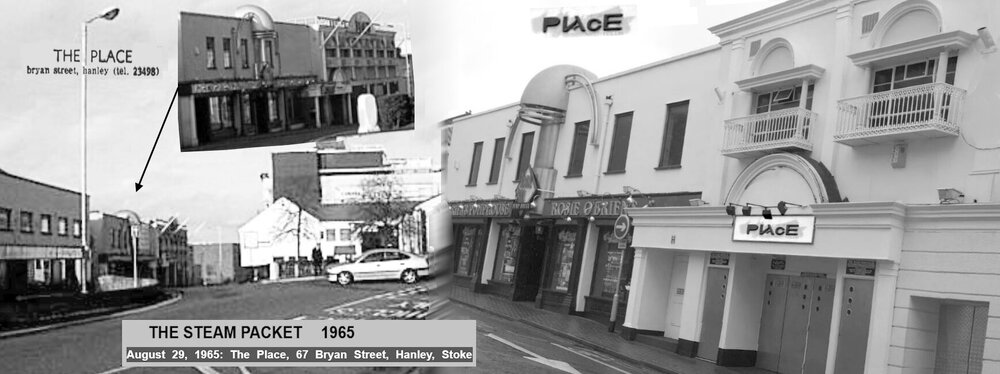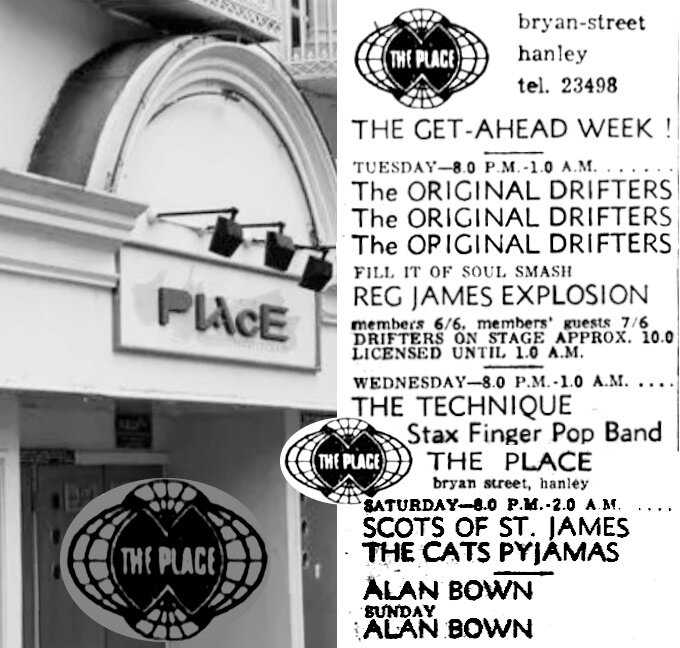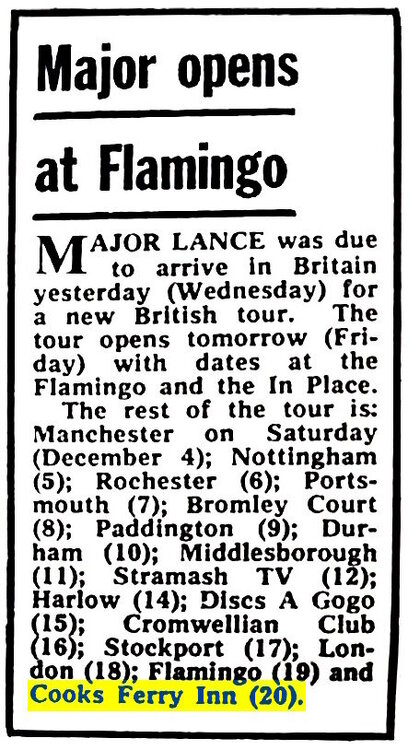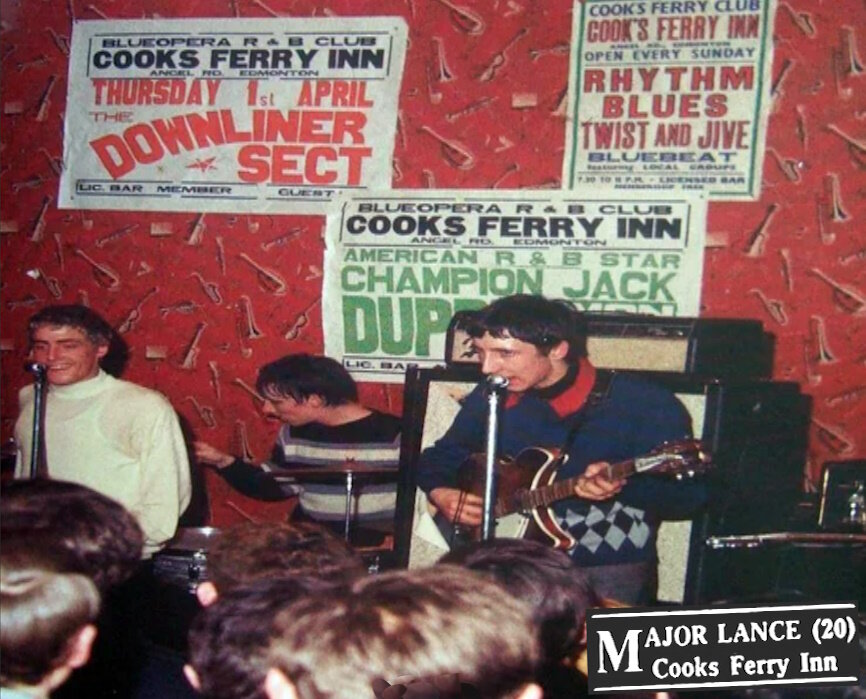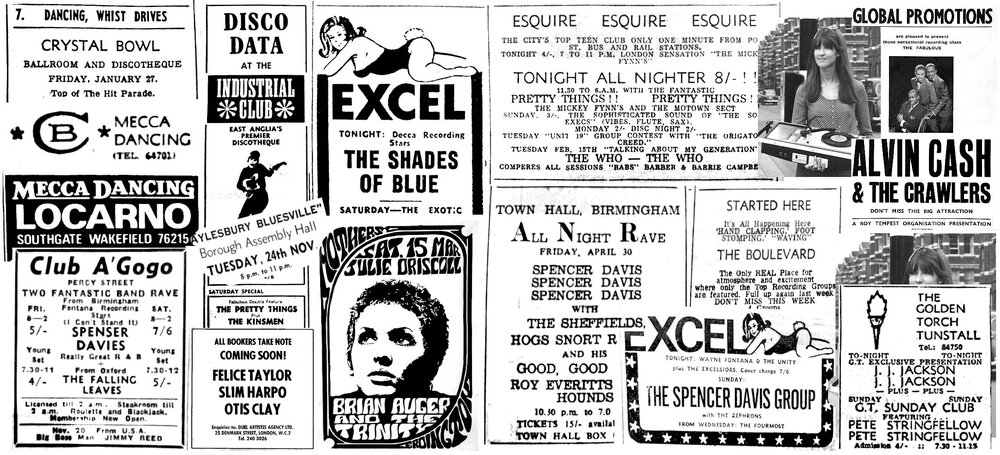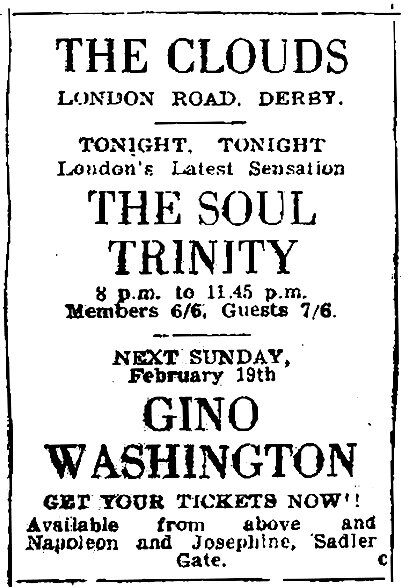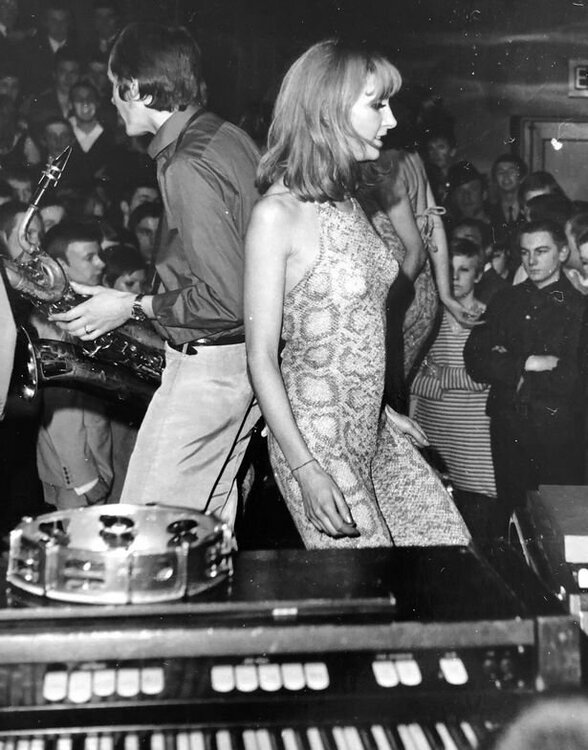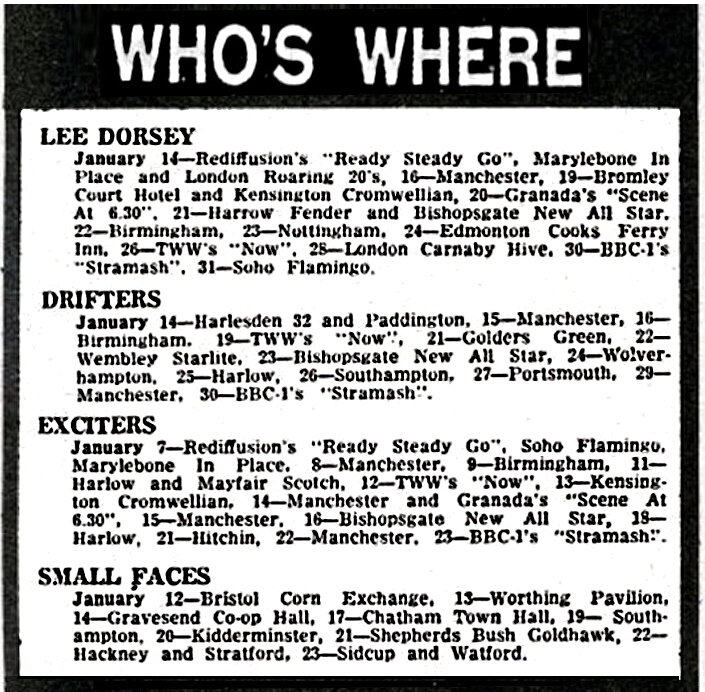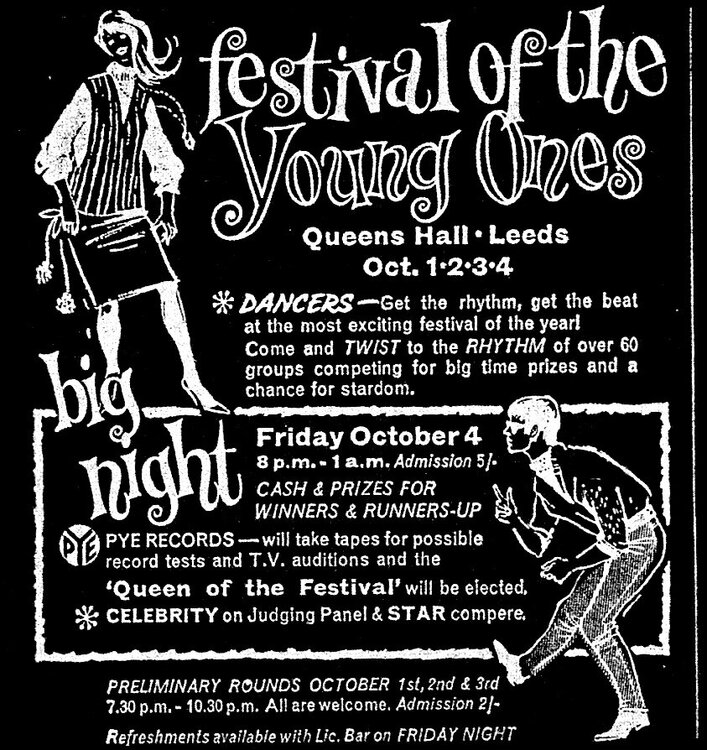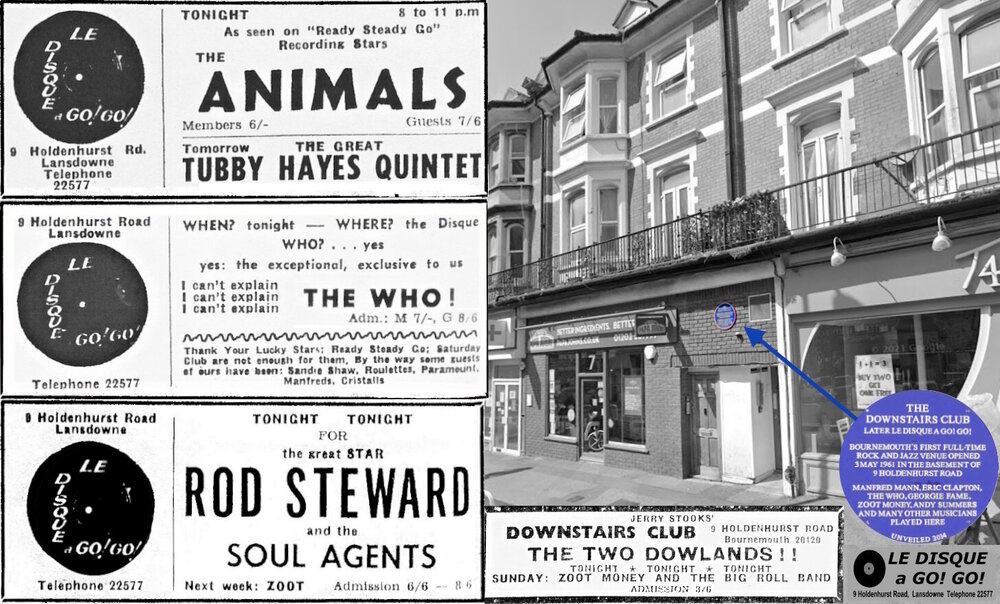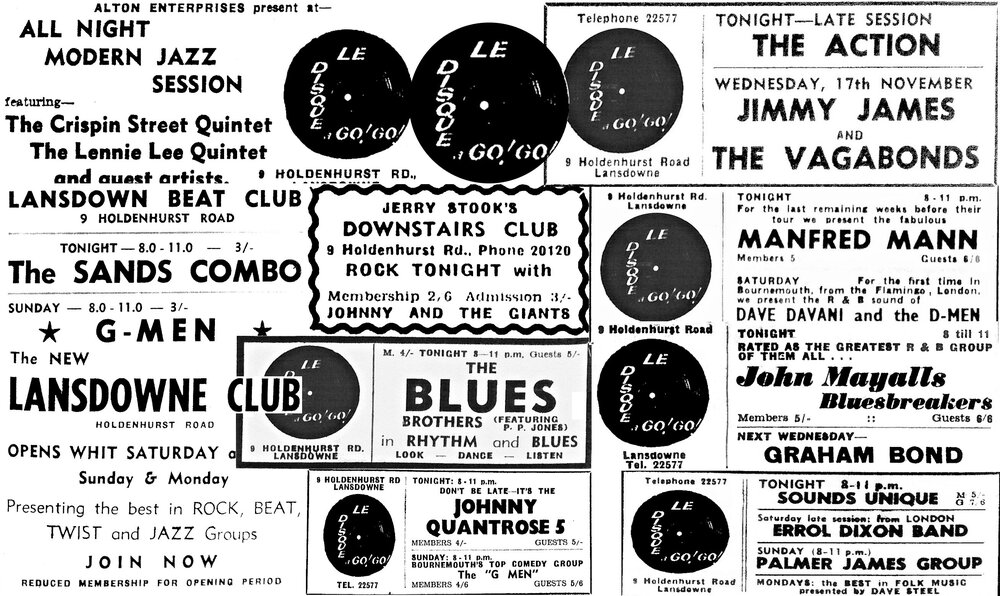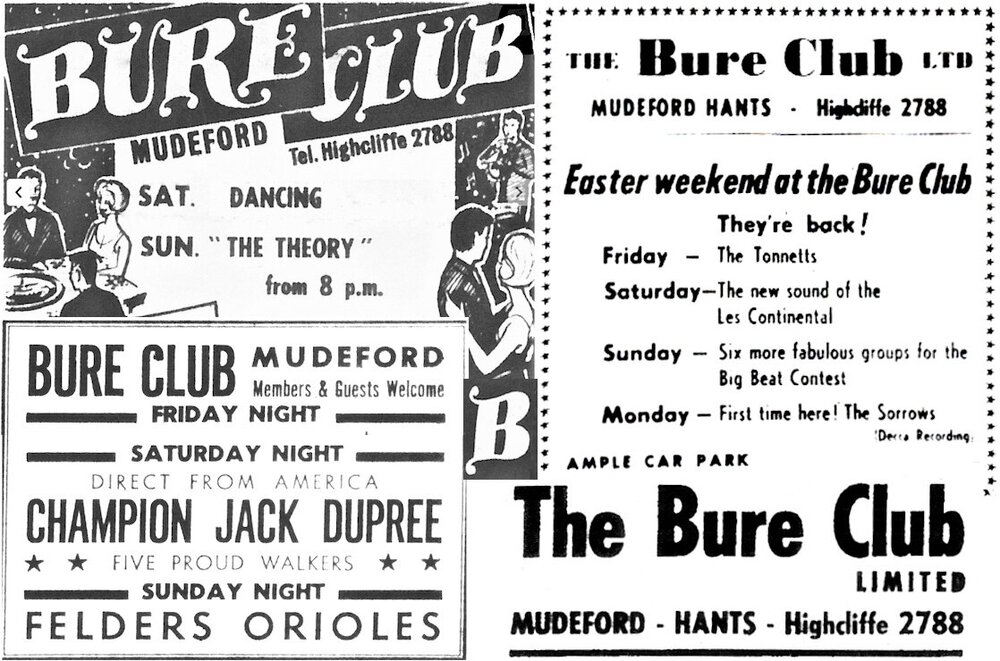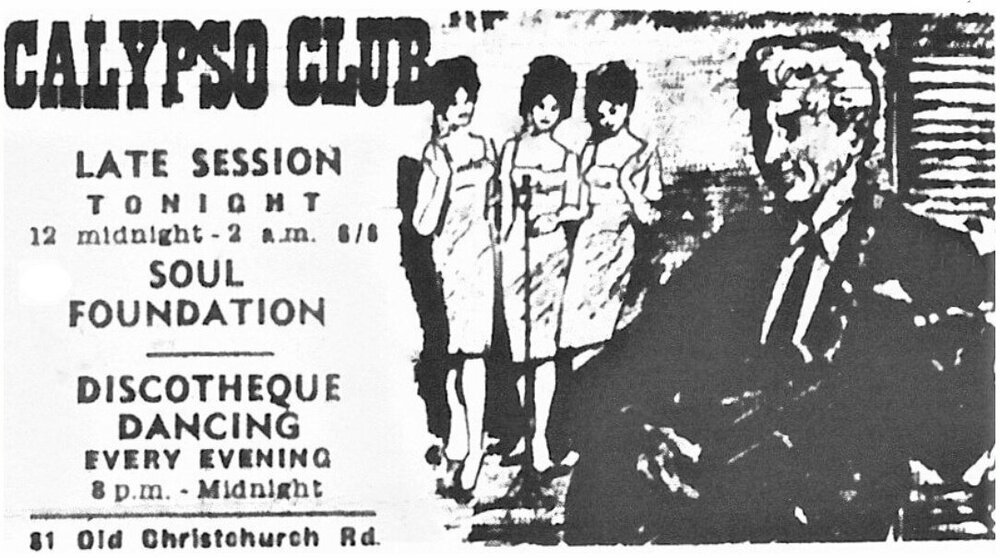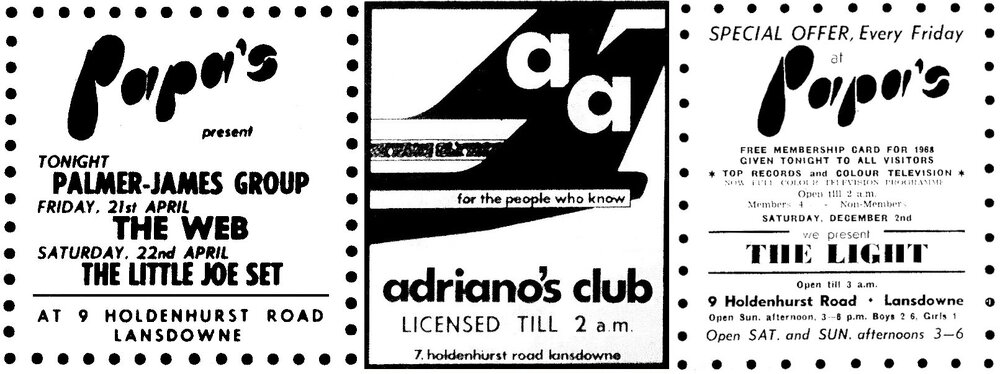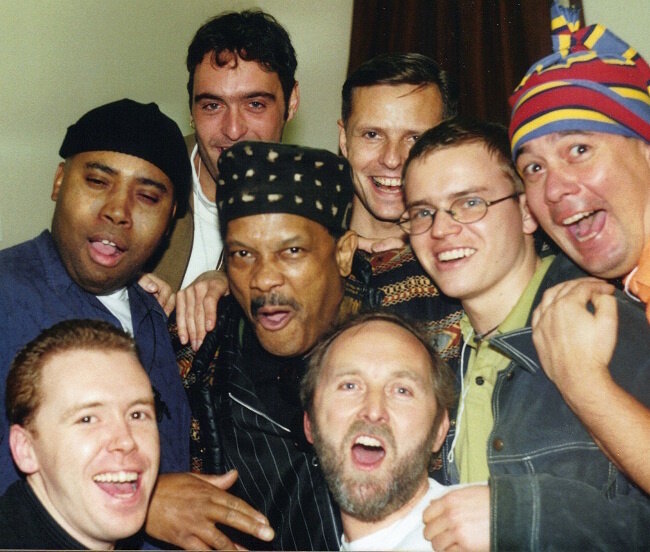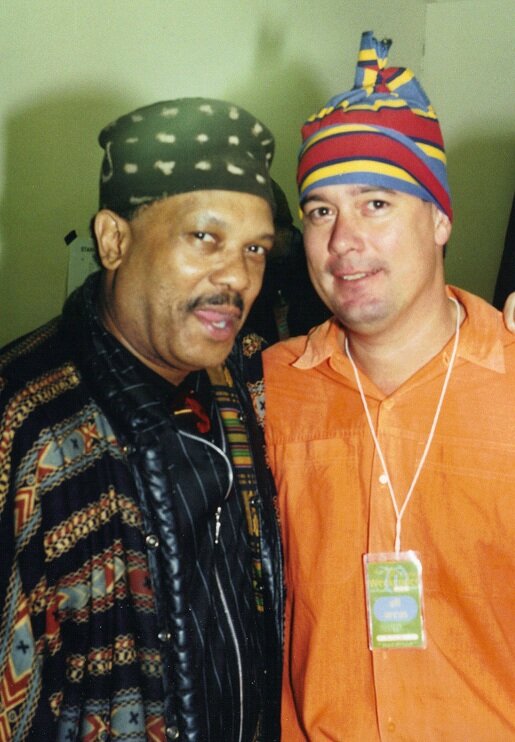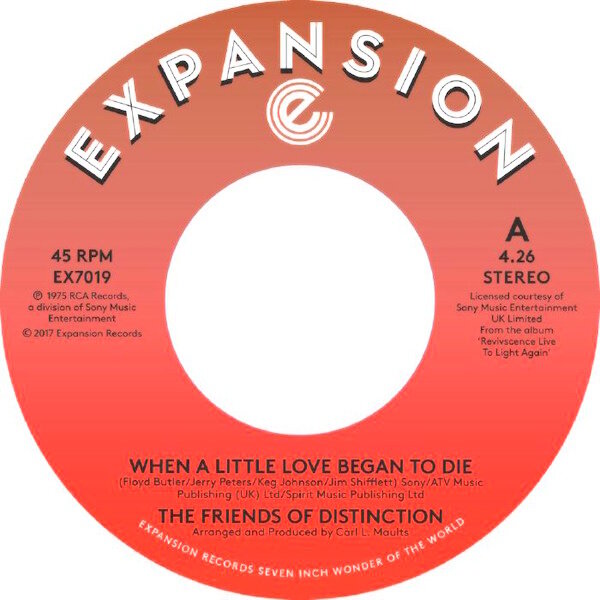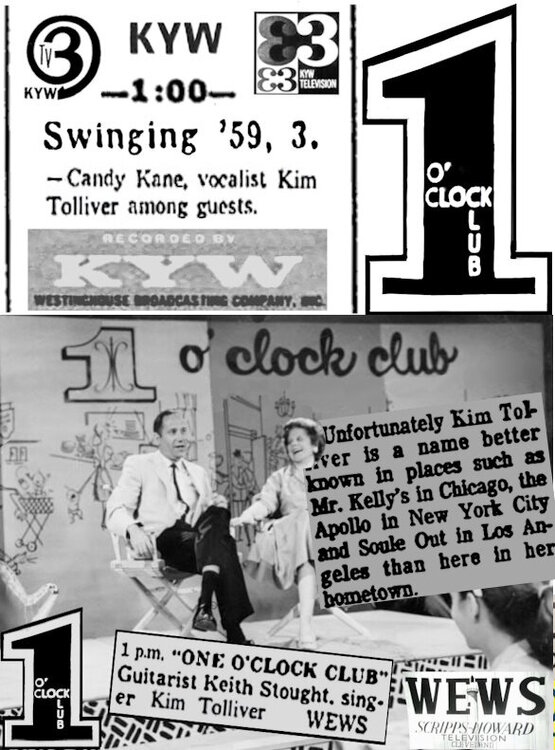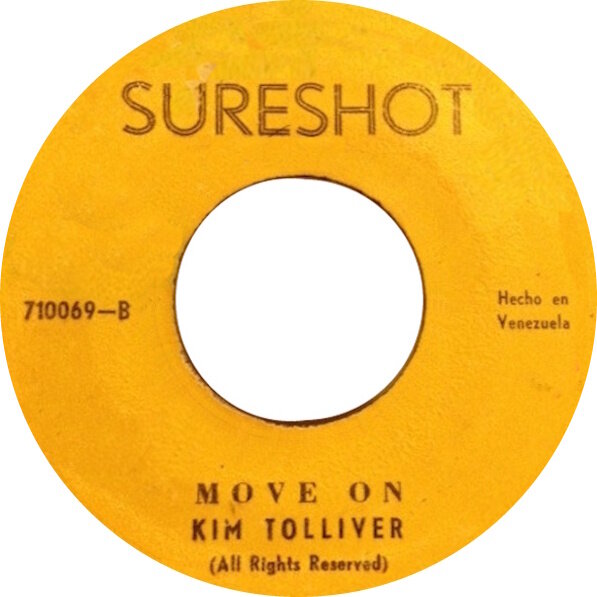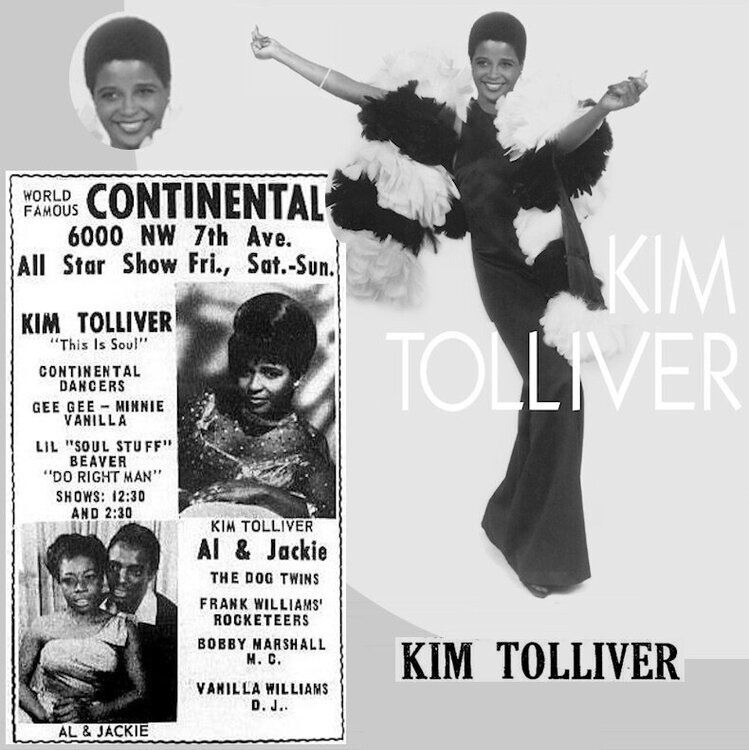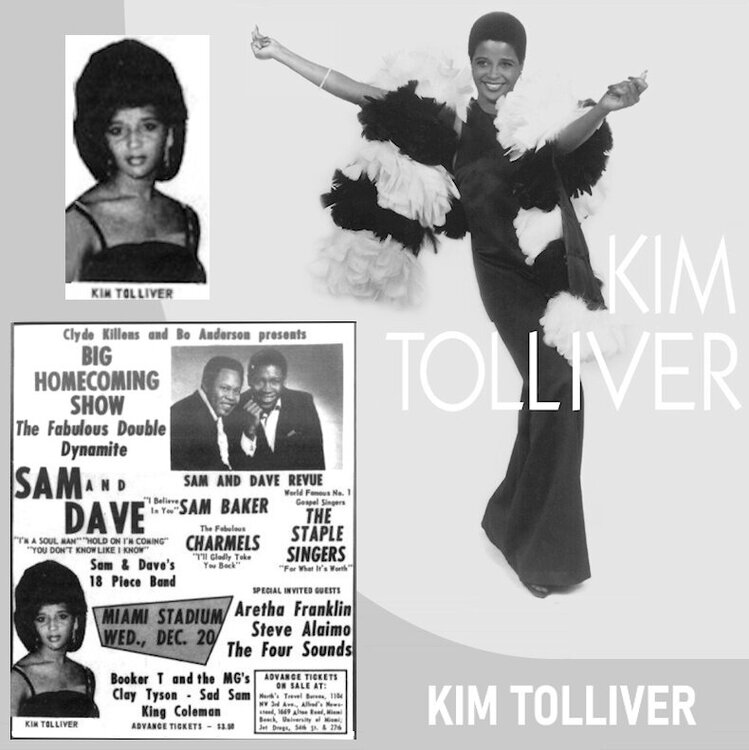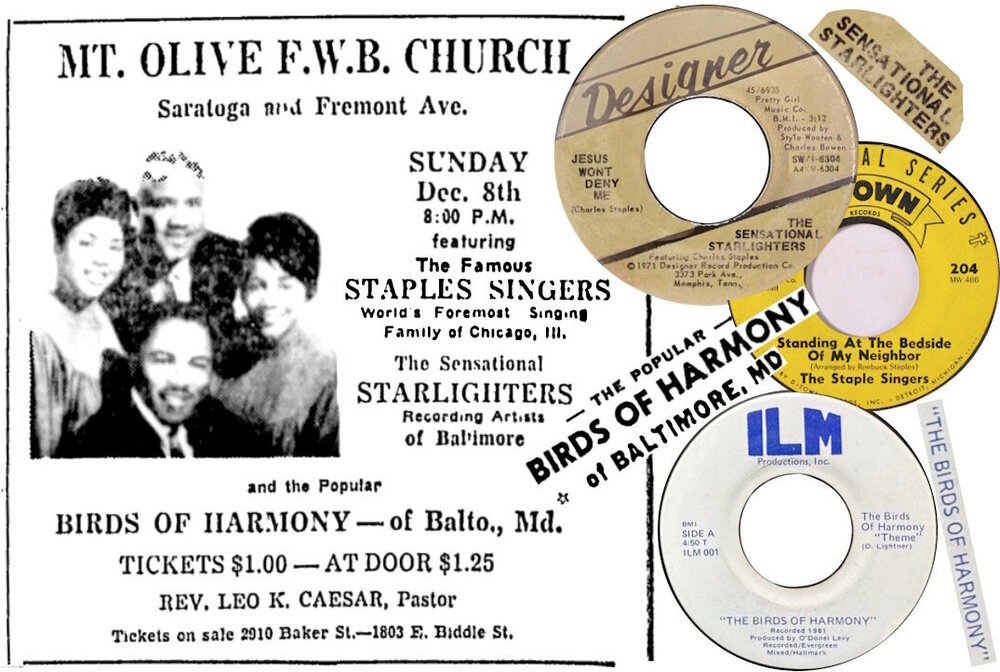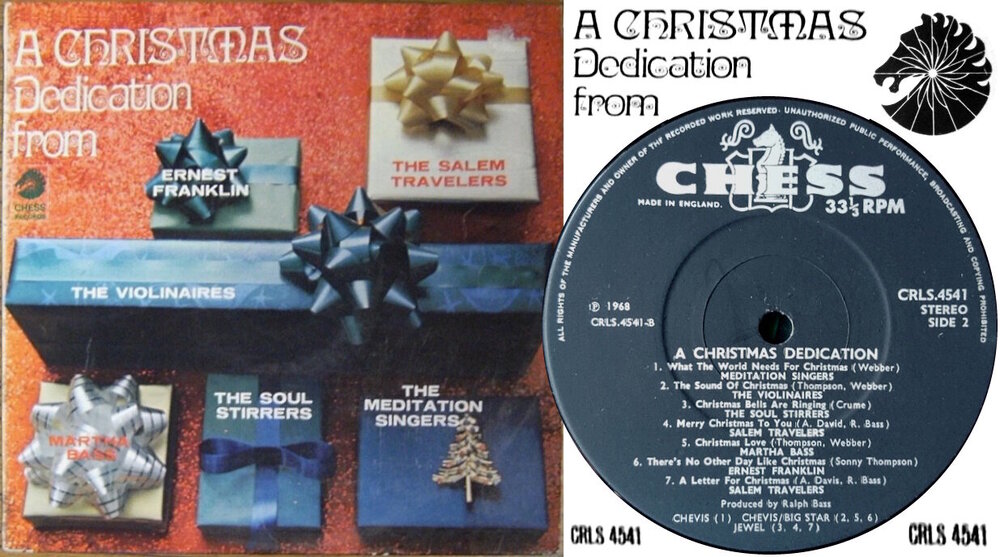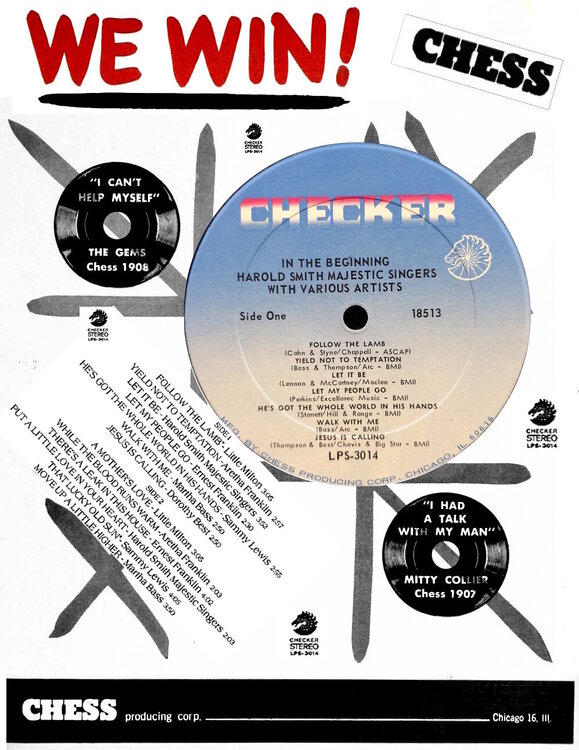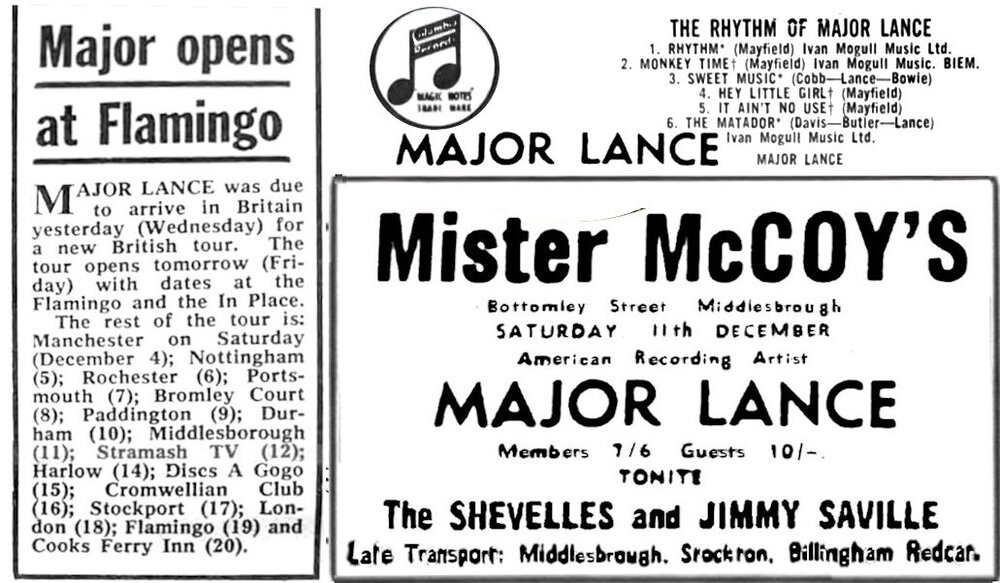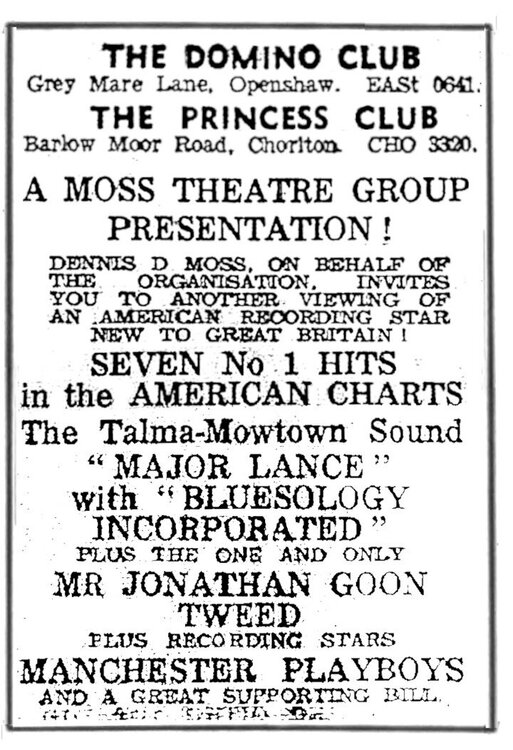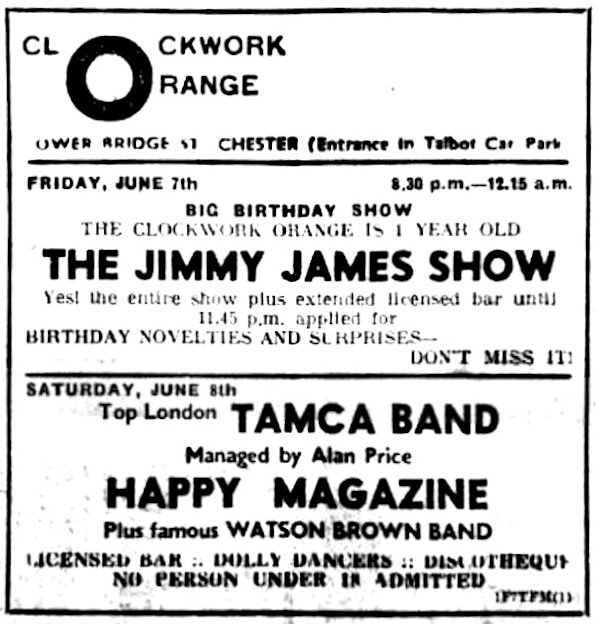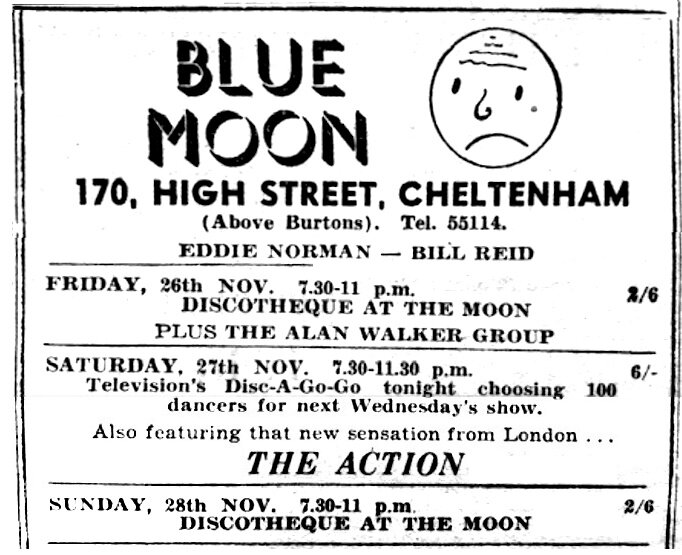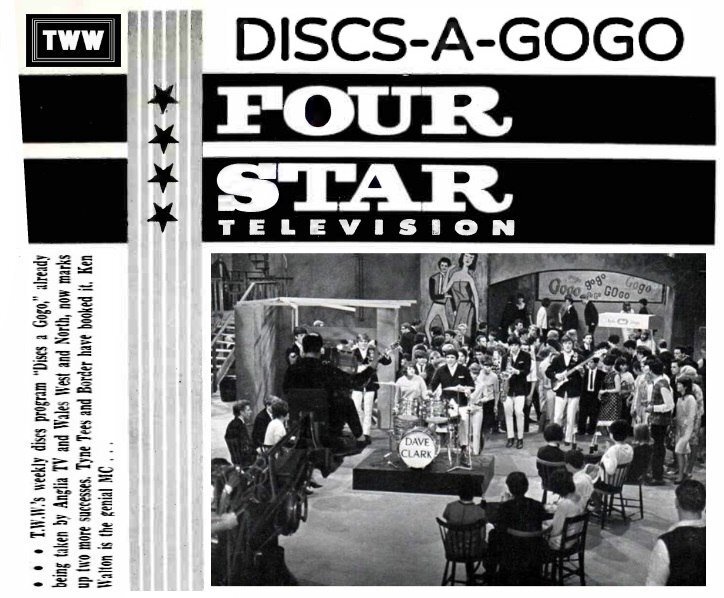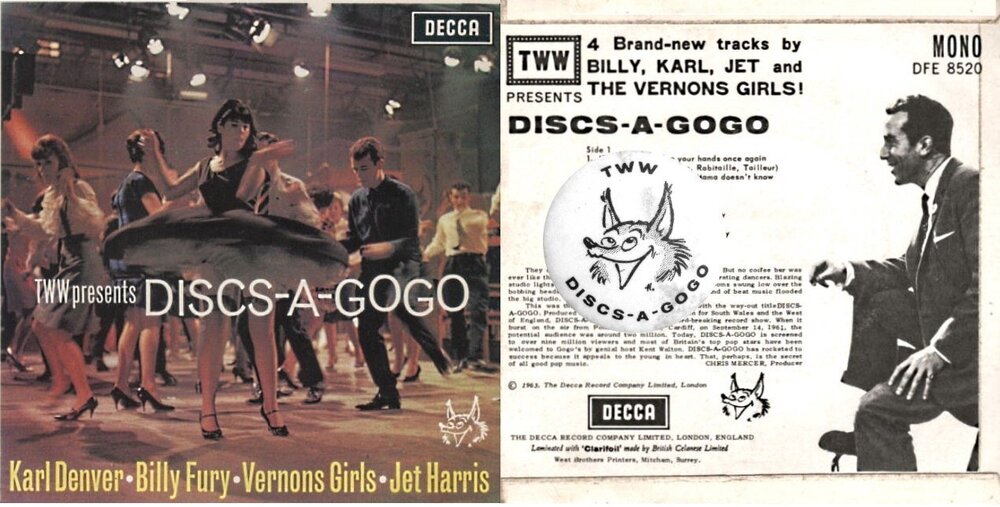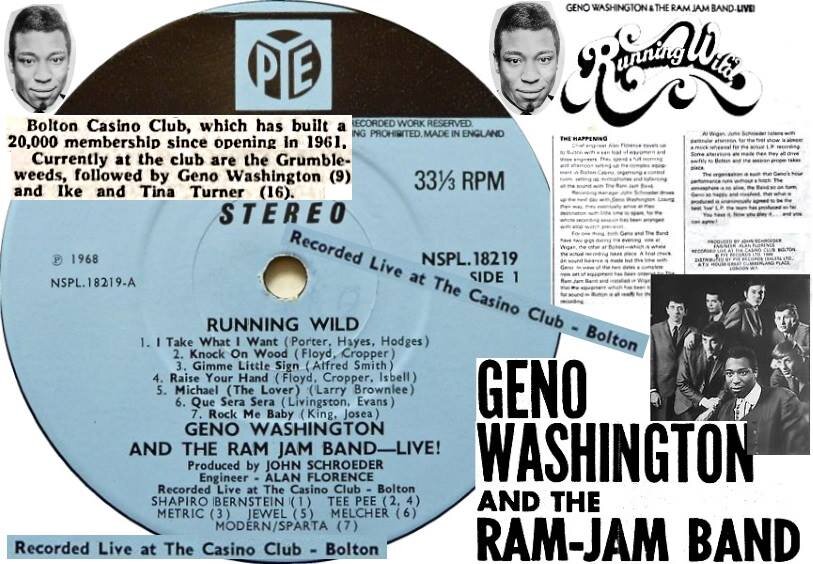-
Posts
7,237 -
Joined
-
Last visited
-
Days Won
45 -
Feedback
0%
Content Type
Forums
Event Guide
News & Articles
Source Guidelines and Help
Gallery
Videos Directory
Source Store
Everything posted by Roburt
-
I believe that set of Original Drifters WERE the Original Drifters ... they weren't the Atlantic recording group or Roy Tempest's fake outfit (actually the Invitations) but were Bill Pinkney's group (who'd been the 'Atlantic' Drifters in the 50's till sacked by George Treadwell / Atlantic).
-
The above includes an ad for Stringfellow (King Mojo Club) appearing @ the Torch (after the Mojo had been shut down) ... Here's a couple of bits for another iconic Stoke area club ...
-
A London area club that burnt brightly for a short time. I believe it was pub based & the building was swept away by a road widening scene (I'm told where the venue stood is now a large roundabout) ...
-
-
-
The Bournemouth area got in on the blues / R&B / soul scene quite early (after having hosted jazz music allnighters ahead of this) ... don't think the area has figured that much since the mid 60's ... seems the same building was used for a number of different clubs between the early & late 60's ...
-
One I love (and it features Teddy P) ... ....
-
We've lost yet another star musician. Saw him perform @ a Southport Weekender & got to spend some time with him there too. A great guy ... ... .... 2nd pic Roy with Steve 'MY HAT'S BETTER THAN YOUR HAT' Hobbs ...
-
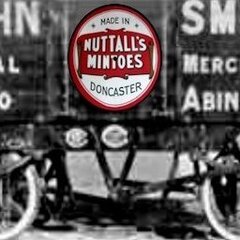
New Soul4Real 45 Releases: Johnny Adams & Kim Tolliver
Roburt commented on Alexsubinas's article in Soul Music News
-
Friends of Distinction founder (group's big hit -- "Grazing In The Grass") Harry Elston has passed away. He was 88 years old. He'd started out in the Hi-Fi's and the Vocals (who cut for Tangerine in 64).
-
-

New Soul4Real 45 Releases: Johnny Adams & Kim Tolliver
Roburt commented on Alexsubinas's article in Soul Music News
Could be but I was told it was Venezuelan. -

New Soul4Real 45 Releases: Johnny Adams & Kim Tolliver
Roburt commented on Alexsubinas's article in Soul Music News
Another few Kim Tolliver related bits ... Kim was on quite a few US TV shows in the 50's / early 60's ... unfortunately tapes of none of them have survived. Kim had a 45 released in Venezuela ... She did lots of shows down in Florida in the late 60's / early 70's ... she was part of Sam & Dave's Revue package for part of that time ... she even did shows in conjunction with Little Beaver ... -

New Soul4Real 45 Releases: Johnny Adams & Kim Tolliver
Roburt commented on Alexsubinas's article in Soul Music News
Got my copies already (but then Alex is great & I did write the notes for the Kim T 45). Ad from the period when Kim was based in Florida ... Otis R was also pencilled in to appear on this show BUT he died a few days earlier in the plane crash. -
Got a copy of that somewhere here.
-
Must have been great to go along to an actual gospel concert when the groups were in their prime. We went to a couple of House Of Blues Gospel Brunch's about 25 years ago but they are quite 'staged events'.
-
Lots of great gospel tracks put out by Chess Records -- Greg B has been on the case with the recent comp LP ... BUT there are still other tracks from Chess that deserve an airing. ALSO a bit 'left field' but this has to be the rarest UK Chess label release ...
-
-
OHH NO, not another big loss ... ANGIE STONE ... R.I.P. ... killed in a car accident ... TMZ and other sources.
-
A slight divergence from the main theme of this thread, but the UASF bases in the UK also had a part to play in the 1960's mod / soul scene. Quite a few GI's based over here would go out to local British soul clubs -- to enjoy a night out dancing but sometimes also to pester the live acts on there to let them get up on stage & perform themselves. Thus, we got Geno Washington, Sonny Childe and more. In addition to military folk based here, US based acts would be signed up by the USO to tour to perform for troops based in Vietnam, Germany or the UK. I know quite a few US recording acts that came over here to play concerts in bases in Germany, Norfolk / Suffolk, Oxfordshire, etc. (Kenny Hamber being just one of these). Taking just one base as my example, UPPER HEYFORD in Oxfordshire. This base (as did every other US one in the UK) had it's own shops, bowling alley & theatre. The US also ran the AFN radio stn in Europe as well as on-base radio stns (& newspapers). Most US personnel lived on base but in the case of Heyford, whole housing estates were built for officers & their families in local towns such as Brackley & Bicester. While lots of the time, the families would use the on-base facilities, they also frequented local shops, schools and pubs. Thus the opportunity was there to pal up with a Yank serviceman or two. If you did get to know any, they could take you on-base to go bowling with them or even to attend an on-base concert. The Norfolk bases such as Alconbury, Bentwaters, Mildenhall and Coltishall had more going on but Upper Heyford also had it's attractions. The theatre there; the SKYKING (where they showed movies & staged live shows) was quite small, so didn't accommodate huge numbers. But if the demand was there, a visiting act would have to do 2 shows on their visit. No doubt, others have tales to tell about getting onto British USAF bases or getting hold of copies the US military newspapers printed over here. I know I have seen a few of these newspapers & they plugged upcoming live act visits quite extensively in order to keep locally based folk from getting too bored or homesick.
-
-
Another famous R&B / soul club from back in the 60's; based out of gentile Cheltenham Spa ... This place was so influential that when the Bristol based ITV company's pop music show wanted to update itself (from a more R&R format to an R&B format), they sent scouts up to this club to get 'mod dancers' to be the studio audience on their TV show (see Nov 65 ad) ... the show had tried to establish itself in the R&R era by putting out an EP of the acts doing live stuff on the show ...
-
Of all the royalties due; to song writers; engineers, actual artists, record label, etc ... THE MOST FREQUENTLY PAID is that to song writers. As long as the re-release is legit & they are still registered (with up to date info held) with BMI or ASCAP, then they will get their royalty payments. With limited edition reissues though, the money involved is small. Someone like Sam Dees, who has written 1000's of recorded songs, of which 100's were hits ... he can just sit back & cash his 6 monthly royalty cheques ... though he has the advantage that folk like Tavares, Whitney Houston, Larry Williams, Ben E King and the like cutting his songs. The trouble with most OLD OBSCURE SOUL TRACKS is that the guys involved (including the writers -- many times members of the group) is that they give up due to lack of success, get normal 9 to 5 jobs and never realise that 20+ years later their old 45 now has a following. The number of folk I've contacted & said YOU DO REALISE YOUR OLD 45 NOW SELLS FOR $1000 / copy or whatever . . . . and WELL . . . THEY DON'T EVEN KNOW IT'S STILL KNOWN ABOUT. At present I'm writing a piece on a MODERN SOUL IN-DEMANDER after finding out (purely by chance) that a guy I have known for around 35 years started out in an obscure Cali group before he joined his hit making Ohio based group. His 1st studio experience (while still in school) resulted in a 45 put out on a label owned by the elder statesmen of that original group. It was the only release on the label, got a few local radio plays and then sank without trace. A few copies eventually found their way to the UK, modern soul jocks gave it spins and it was soon valued @ over $300 / copy. My contact actually got back with the original group's members & they did a 50th Anniversary reunion show @ their old high school's prom. The 1st time they'd been back in touch in 45 years. Of course, this 45 sold few copies back in the 70's, so BMI never really got to collect any royalties on their behalf, even though the group's leader (& their record label's owner) was savvy enough to register their songs with the publishing org. Ady C (with his Ace / Kent experiences) can wax lyrical on this subject and has done so in the past.
-
3 main publishing outfits in the US ... BMI, ASCAP & a n other. Theirs SESAC somewhere else. ASCAP was who most black writers registered with. Both BMI & ASCAP were the orgs that the writers royalties were paid via -- so they collect the monies in & then pay them out to the writers on a term basis (every 3 or 6 months I think). ALSO they keep contact info for each publisher they represent, so you can contact the writers via them (if the writers have kept the publishers up to date with regard to their current address / phone numbers). BMI was the biggest org of them all but some of the time, the info they keep isn't 100% correct or fully maintained. An old mention on a 60's / 70's 45 (or LP) that it was registered with BMI (or ASCAP) via xxx music publishers, doesn't mean that those orgs still have the details or still post up the info on many songs originally registered with them. PLUS, many times the wrong info is registered by them (poor old Sidney Barnes wrote many songs that are registered under other folks names -- so they've been getting the royalties on them, not him.
-
In Spain at present (on a winter break). Will check up & reply when back home. Seem to recall it was one of the London clubs they played on a regular basis. A piece about their live album below, cut @ Bolton Casino (this club had an associate club down the road but can't remember which Lancy town it was in) ...



